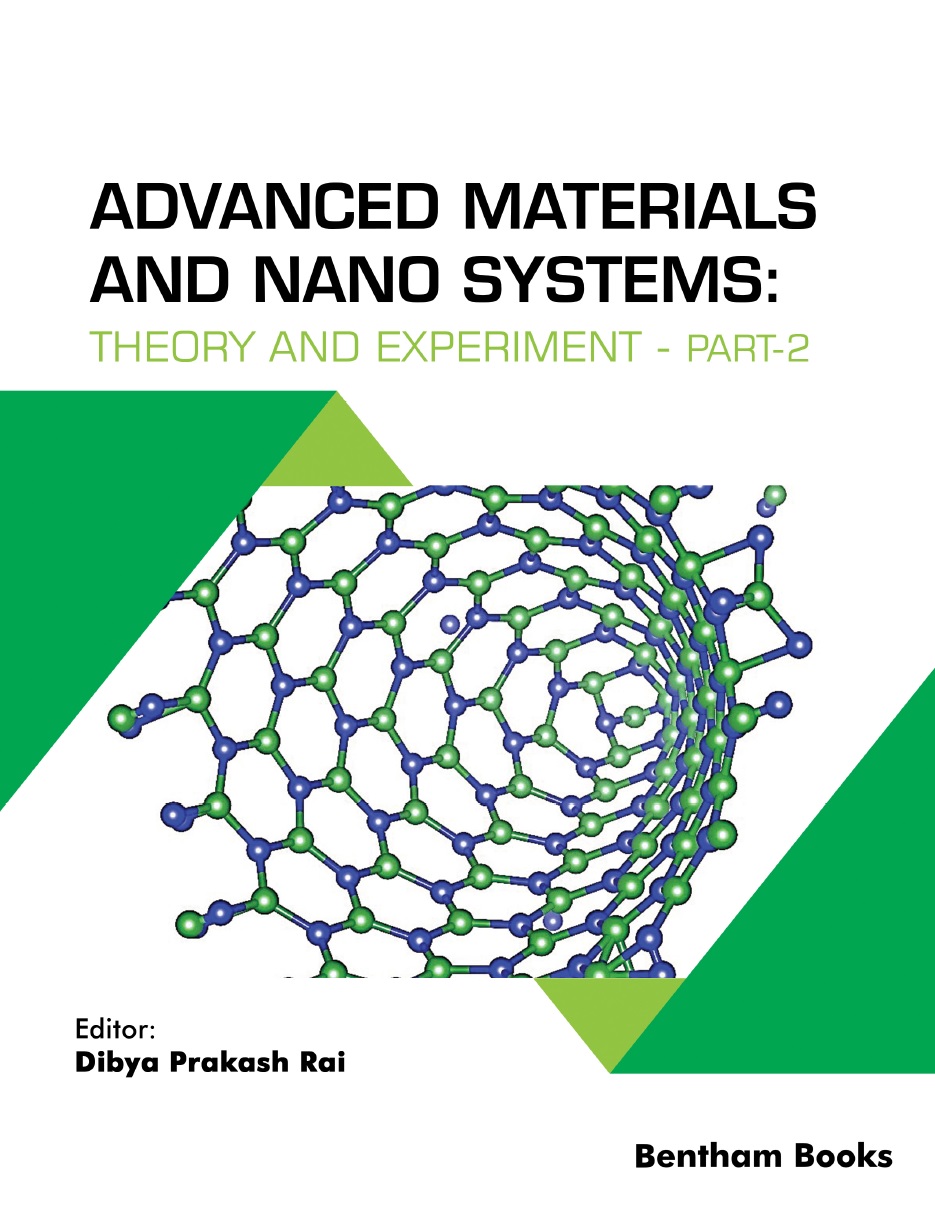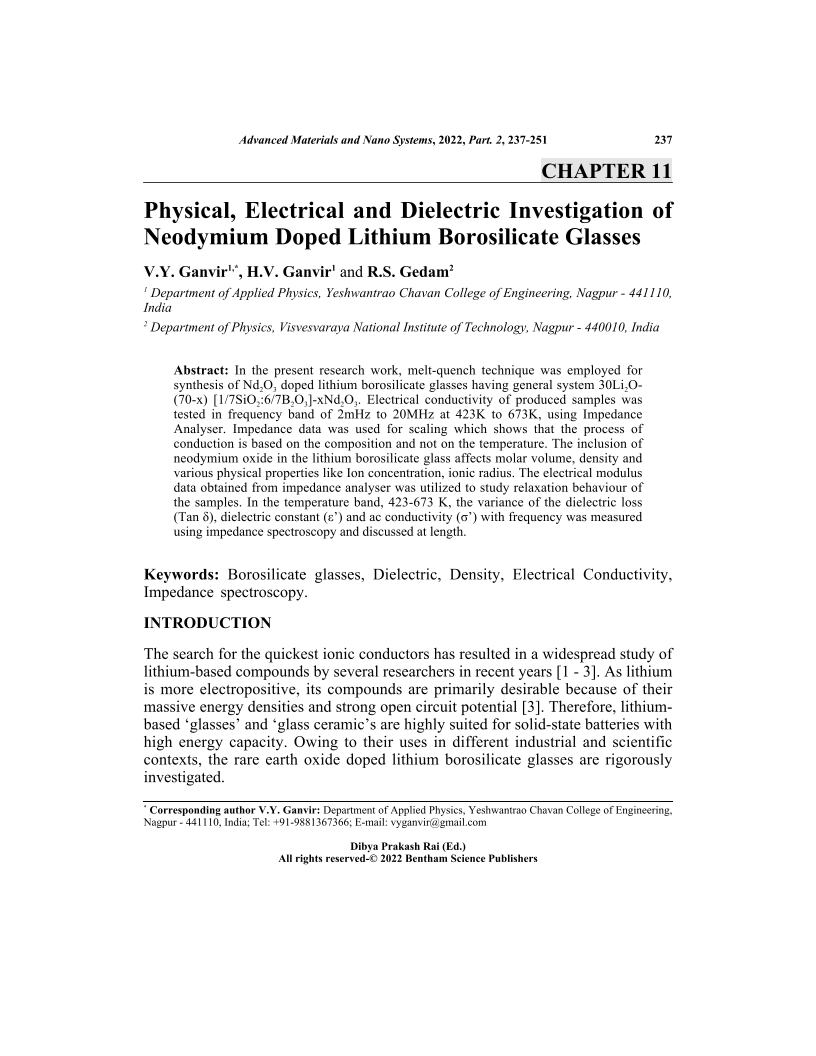Physical, Electrical and Dielectric Investigation of Neodymium Doped Lithium Borosilicate Glasses

- Authors: V.Y. Ganvir1, H.V. Ganvir2, R.S. Gedam3
-
View Affiliations Hide Affiliations1 Department of Applied Physics, Yeshwantrao Chavan College of Engineering, Nagpur 441110,India 2 Department of Applied Physics, Yeshwantrao Chavan College of Engineering, Nagpur - 441110,India 3 Department of Physics, Visvesvaraya National Institute of Technology, Nagpur - 440010, India
- Source: Advanced Materials and Nanosystems: Theory and Experiment - Part 2 , pp 237-251
- Publication Date: September 2022
- Language: English
Physical, Electrical and Dielectric Investigation of Neodymium Doped Lithium Borosilicate Glasses, Page 1 of 1
< Previous page | Next page > /docserver/preview/fulltext/9789815049961/chap11-1.gif
In the present research work, melt-quench technique was employed for synthesis of Nd2O3 doped lithium borosilicate glasses having general system 30Li2O- (70-x) [1/7SiO2:6/7B2O3]-xNd2O3. Electrical conductivity of produced samples was tested in frequency band of 2mHz to 20MHz at 423K to 673K, using Impedance Analyser. Impedance data was used for scaling which shows that the process of conduction is based on the composition and not on the temperature. The inclusion of neodymium oxide in the lithium borosilicate glass affects molar volume, density and various physical properties like Ion concentration, ionic radius. The electrical modulus data obtained from impedance analyser was utilized to study relaxation behaviour of the samples. In the temperature band, 423-673 K, the variance of the dielectric loss (Tan δ), dielectric constant (ε’) and ac conductivity (σ’) with frequency was measured using impedance spectroscopy and discussed at length.
-
From This Site
/content/books/9789815049961.chap11dcterms_subject,pub_keyword-contentType:Journal -contentType:Figure -contentType:Table -contentType:SupplementaryData105

